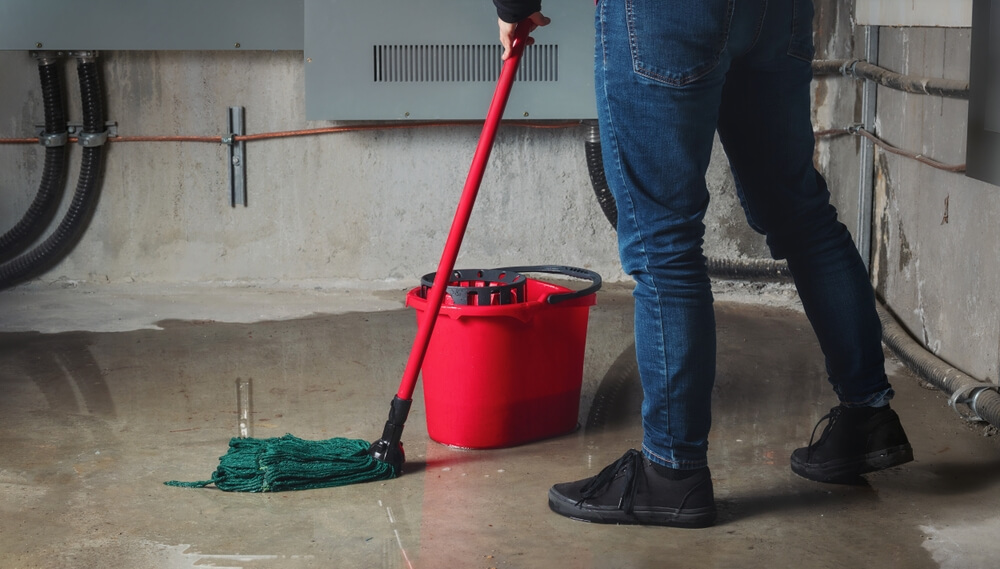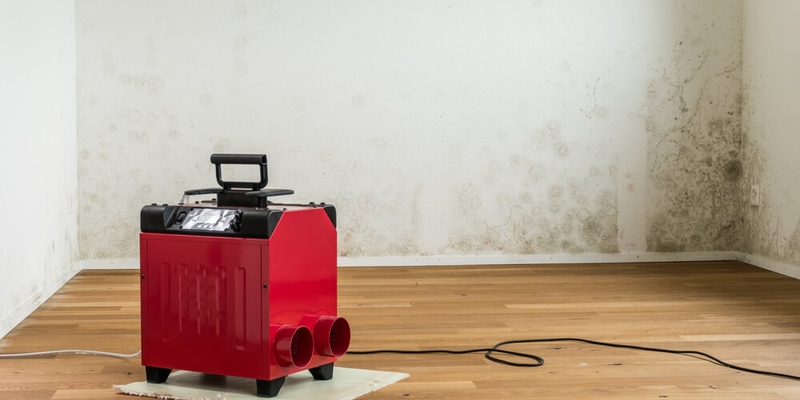
If you are not redirected within 30 seconds, please click here to continue.
Samedi: 10h – 16h HAE

If you are not redirected within 30 seconds, please click here to continue.
If you are not redirected within 30 seconds, please click here to continue.
Do you need tenant insurance if you’re subletting?

While tenant insurance isn’t mandatory in Canada, it’s recommended that you get it — especially if you plan on subletting out your rental apartment or home. But your subtenant might need a little extra protection too. After all, if something unexpected happens while you’re away, your tenant insurance will only cover your personal belongings, not your subtenant’s.
Additionally, if the unit becomes uninhabitable for any reason, your policy won’t provide Additional Living Expenses (ALE) coverage for your subtenant either.
Tenant insurance can fill gaps in your landlord’s insurance and protect against risks like guest injuries or property damage. Without it, you could be financially and legally responsible for any issues that arise.
You’re not alone in thinking about these “what ifs.” To skip the uncertainties, some landlords make tenant insurance a requirement. In fact, a recent survey found that 49% of respondents were required by their landlords to have tenant insurance, highlighting how essential it can be.
What is subletting and how does it work?
Subletting is when a tenant rents out all or part of their rented space to another person, called a subtenant, while still maintaining responsibility for the original lease.
For example, if you signed a one-year lease but are moving out of town for a few months, you can sublet your apartment to someone who will occupy it during your absence. However, you’ll remain legally accountable to your landlord for the rent and the condition of the space.
Subletting is permissible in most provinces but usually requires written approval from your landlord. Each province has its own rules about landlord consent, so it’s important to check local regulations.
Sublessors must also draft a clear sublease agreement. The agreement should outline responsibilities, such as the subtenant’s obligation to pay rent and maintain the unit, while also specifying any rules or conditions to avoid misunderstandings.
Learn more: Home exchanges and timeshares: How do they work?
What happens to your tenant insurance when you sublet your lease?
When you sublet your rental, the risk profile of your insurance policy changes because someone else is living in the space.
Tenant insurance is designed to protect you, the principle tenant (policyholder) and your belongings, but not the subtenant or their property.
This is why you need to notify your insurance provider when subletting, as failing to do so could lead to denied claims if something goes wrong.
Does the subtenant need their own tenant insurance?
The short answer is yes. Subtenants are not covered by the original tenant’s insurance policy. This means that if a subtenant’s belongings are stolen or damaged, or if they accidentally cause property damage or injury to others, they could face major financial losses without their own tenant insurance.
If you take on a subtenant, you should inform your insurer so they can adjust your coverage accordingly or advise you on any specific conditions. For example, some providers may require you to include terms in the sublease agreement that hold the subtenant accountable for accidental damages or ensure they obtain their own insurance.
Remember, as the sublessor, you retain all your original responsibilities under the lease. If your subtenant causes damage, you’ll likely be the one held accountable—not them.
Read more: Does renters' insurance covers damage to the landlord's property?
Is landlord insurance required when subletting?
For primary tenants who sublet their rental, landlord insurance might sound necessary, but it generally isn’t required.
Landlord insurance is typically designed to protect property owners, not tenants, offering coverage for the building itself and associated liabilities. Since, as a tenant, you don’t own the property, landlord insurance doesn’t apply directly to you.
Related: Does your townhouse need home or condo insurance?
Operating an Airbnb when you don’t own it: What about short-term subletting?
Airbnb arbitrage in Canada is when someone rents a property long-term and subleases it on Airbnb for short-term stays to earn a profit. It requires landlord approval and must follow local rental laws, which vary by city and province.
However, this practice must have your landlord’s explicit approval and comply with all relevant local rental laws, which can vary significantly depending on your city or province.
For instance, some cities like Vancouver have additional restrictions, such as requiring hosts to live on the property or limiting the number of nights a property can be rented. Additionally, standard tenant insurance often excludes commercial activities like short-term rentals, which means you need specialized short-term rental policies.
Engaging in illegal subletting is not only against the rules but could also leave you financially vulnerable. Standard tenant insurance typically excludes coverage for commercial activities like short-term rentals, so even if you purchase specialized short-term rental policies, they are unlikely to provide coverage if the arrangement violates local laws.
Furthermore, honesty with your insurer is absolutely non-negotiable. Misrepresenting or concealing the nature of your rental activities can result in denied claims, canceled policies, and other serious consequences. Always operate within the law and disclose all rental details accurately to protect yourself.
What insurance do short term rentals offer?
Airbnb offers two types of coverage for hosts through its AirCover program, but neither is foolproof —it’s usually the second payer on any filed claims.
- Host protection insurance provides liability coverage for up to $1 million for third-party injuries or damages caused by guests. However, this does not apply to personal belongings, intentional damages, or events outside your responsibility.
- Host guarantee protection covers up to $3 million for property damages caused by guests. While it includes damage to your home, furniture, and valuables, it doesn't cover wear and tear, certain high-value items, or losses from events like natural disasters.
Despite these protections, gaps in Airbnb's coverage mean you, as the tenant subletting on Airbnb, need additional insurance. These supplementary policies can protect against gaps such as accidental or intentional damages caused by guests, loss of rental income, and liability claims exceeding Airbnb’s limits.
For subletting guests, insurance isn’t mandatory but is strongly recommended. Guests can opt for travel or renter's insurance to cover personal liability or damages they might unintentionally cause.
Read more: What you need to know before renting out your home on Airbnb
Tips for tenants and subtenants
Subletting is a great option for tenants needing flexibility, but it requires careful planning to avoid financial and legal headaches. These quick tips will help you stay protected:
For tenants (sublessors)
- Notify your insurance provider: Always inform your tenant insurance provider before subletting. Subletting changes your risk profile, and your provider may require updates to your policy.
- Draft a clear sublease agreement: Include key details like rent amount, length of the sublease, and the subtenant’s responsibilities. Specify if the subtenant needs their own tenant insurance.
- Check rules with your landlord: Landlords require formal approval for subletting or impose restrictions on the arrangement. Make sure you comply with provincial regulations and your lease agreement.
- Document property condition: Take photos and document the property’s condition before and after the sublease period to avoid disputes about damages.
- Retain oversight: Even when subletting, you are still accountable to your landlord. Stay communicative with your subtenant to address any issues promptly.
Related: How to lower home insurance rates by keeping your home in good shape
For subtenants
- Get your own tenant insurance: Protect yourself against theft, damage, and liability. Tenant insurance also covers additional living expenses if the property becomes uninhabitable and you need to move elsewhere.
- Understand your responsibilities: Review the sublease agreement thoroughly to know your duties, such as paying rent on time and maintaining the unit.
- Ask about building policies: If insurance questions arise, clarify with the sublessor or directly with the landlord if necessary.
- Protect valuable belongings: Ensure the policy you choose offers sufficient coverage for personal items like electronics, jewelry, or furniture. You can add specific riders or endorsement for high-value items.
- Confirm coverage start date: Make sure your insurance policy is active from the first day you move in to avoid any coverage gaps.
Taking these steps not only reduces risk but also fosters a smoother renting experience for all parties involved.
Related: Most common insurance claims in Canada
When does each type of insurance apply?
Knowing whose insurance covers what can be confusing, especially in sublease situations. Here’s when these tiers of insurance kick in:
Landlord's insurance:
This covers the property owner’s building and associated liabilities, such as structural damage or injuries occurring in common areas. It does not cover tenants’ personal belongings or liabilities.
For example, if a fire damages the building, the landlord’s insurance would cover repairs and replacement costs for the structure but not the tenant’s or subtenant’s possessions.
Tenant's insurance:
This protects the primary tenant (sublessor) and their belongings. It also provides liability coverage for accidental damages caused by the tenant or their guests.
For instance, if a subtenant causes water damage to a neighboring unit, renter's insurance might cover the liability—given the subletting is disclosed and you've added sewer back-up or overland flooding endorsements
Subtenant's insurance:
Subtenants need their own insurance to protect their belongings and provide liability coverage. For example, if a subtenant’s laptop is stolen, it'll be covered by the content coverage portion of the policy,
The key to a worry-free experience is ensuring you're properly protected, no matter where you call home or how long you stay.
Read next: How much home insurance coverage do you actually need?
Don't waste time calling around for tenant insurance
Use RATESDOTCA to shop around and compare multiple quotes at the same time.
Finding the best tenant insurance coverage has never been so easy!
Get money-saving tips in your inbox.
Stay on top of personal finance tips from our money experts!










